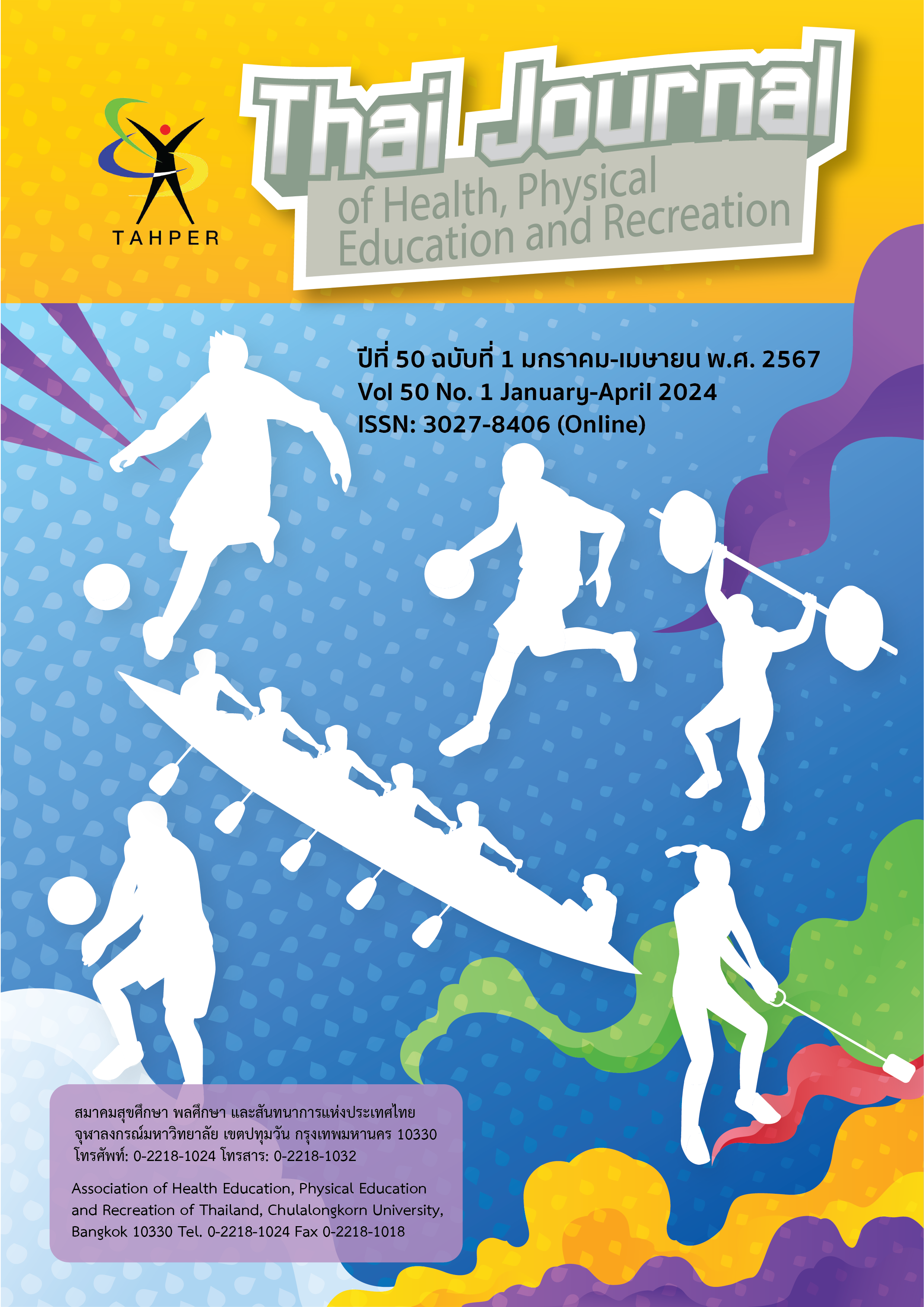Effects of Pulmonary Rehabilitation Programs on Affected Athletes Dust smaller than PM 2.5 microns
Main Article Content
Abstract
This research is a quasi-experimental study that examines three measurement periods: before the experiment, during the experiment, and immediately after completing the experiment. The objective was to study and compare the effectiveness of lung capacity recovery programs on athletes who have been impacted by PM 2.5 fine dust pollution in Chiang Mai province, aged 18-25 years. The sample group consists of 150 athletes divided into three groups: experimental group 1, experimental group 2, and a control group, each consisting of 50 individuals. Experimental group 1 participated in a lung capacity recovery program using the Triflow device, while experimental group 2 participated using underwater breathing apparatus. The control group continued with their normal lifestyle. The study was conducted over a period of 8 weeks, collecting data through lung capacity assessments of the athletes at three time points: before the experiment, during the experiment, and after the experiment. The average values were compared using Independent Samples t-test and repeated measure ANOVA to analyze repeated measurements. The study found that after 4 and 8 weeks of the experiment, both experimental groups showed significantly higher lung capacity averages compared to the control group (p<0.01). Based on these findings, it can be concluded that the lung capacity recovery program for athletes impacted by PM 2.5 fine dust pollution is effective and can significantly improve the average lung capacity of athletes.
Article Details

This work is licensed under a Creative Commons Attribution-NonCommercial-NoDerivatives 4.0 International License.
Critical thinking in journals is the right of the author. The Association of Health Education, Physical Education and Recreation of Thailand is not always required, to create diversity in ideas and creativity.
ความคิด ข้อวิพากษ์ในวารสารเป้นสิทธิของผู้เขียน สมาคมสุขศึกษา พลศึกษา และสันทนาการแห่งประเทศไทยไม่จำเป็นต้องเห็นชอบด้วยเสมอไป เพื่อให้เกิดความหลากหลายในความคิดและความสร้างสรรค์
References
กรมควบคุมมลพิษ. (2553). กำหนดมาตรฐานฝุ่นละอองขนาดไม่เกิน 2.5 ไมครอน ในบรรยากาศทั่วไป. กระทรวง ทรัพยากรธรรมชาติและสิ่งแวดล้อม. สืบค้นเมื่อ 15 กันยายน 2566 สืบค้นจากhttp://infofile.pcd.go.th/law/2_99_air.pdfCFID=17460 708&CFTOKEN=63440791.
Amonette, W., and Dupler, T. (2002). The effects of respiratory muscle training on VO2 max, the vantilatory threshold and pulmonary function. Journal of Exercise Physiology Online, 5(2), 29-35.
Archiza, B., Andaku, D. K., Caruso, F. C. R., Bonjorno, J. C., Oliveira, C. R., Ricci, P. A., Amaral, A. C. D., Mattiello, S.M., Libardi, C.A., Phillips, S.A., Arena, R., and Borghi-Silva, A.. (2017). Effects of inspiratory muscle training in professional women football players: a randomized sham-controlled trial. Journal of Sports Sciences, 16, 1-10.
A S Toklu , A Kayserilioğlu, M Unal, S Ozer, S Aktaş. (2003). Ventilatory and metabolic response to rebreathing the expired air in the snorkel. Int J Sports Med. 2003 Apr, 24(3):162-5.
McCafferty WB. Air pollution and athletic performance. Springfield: Charles C Thomas, 1981.
Ozmen, T., Gunes, G. Y., Ucar, I., Dogan, H., and Gafuroglu, T. U. (2016). Effect of respiratory muscle training on pulmonary function and aerobic endurance in soccer players. International Journal of Sports Medicine, 57(5), 507-513.


